Writing Hacks: Maximizing Your Minutes
Posted on Aug 15, 2017
You don’t have to write as if time is running out. With the proper mind-set and a well-thought-out scheme, you’ll be able to finish your work with minutes (even hours) to spare.

Here are seven ways you can budget your time to fit your writing needs.
- Research Paper
- Formal Essay
- Journalistic Article
- PR/Advertising Copy
- Letters/E-mails
- Short Story
- Novel
- How Much Should You Plan Before Starting a Novel?
- BUDGETING YOUR TIME TO COMPLETE A RESEARCH PAPER
- Anonymous source persons
A single research paper can take about 3–5 months to complete, with most of it covering the data-gathering procedure. Writing isn’t as much of a process as the research and data-gathering is, because research papers often follow a set of guidelines (style guides), depending on the field you’re in. The writing part of your paper mostly involves understanding your research, piecing together the data, and interpreting them. As for editing, it is all a matter of making sure that the paper follows the requirements set by the style guide.
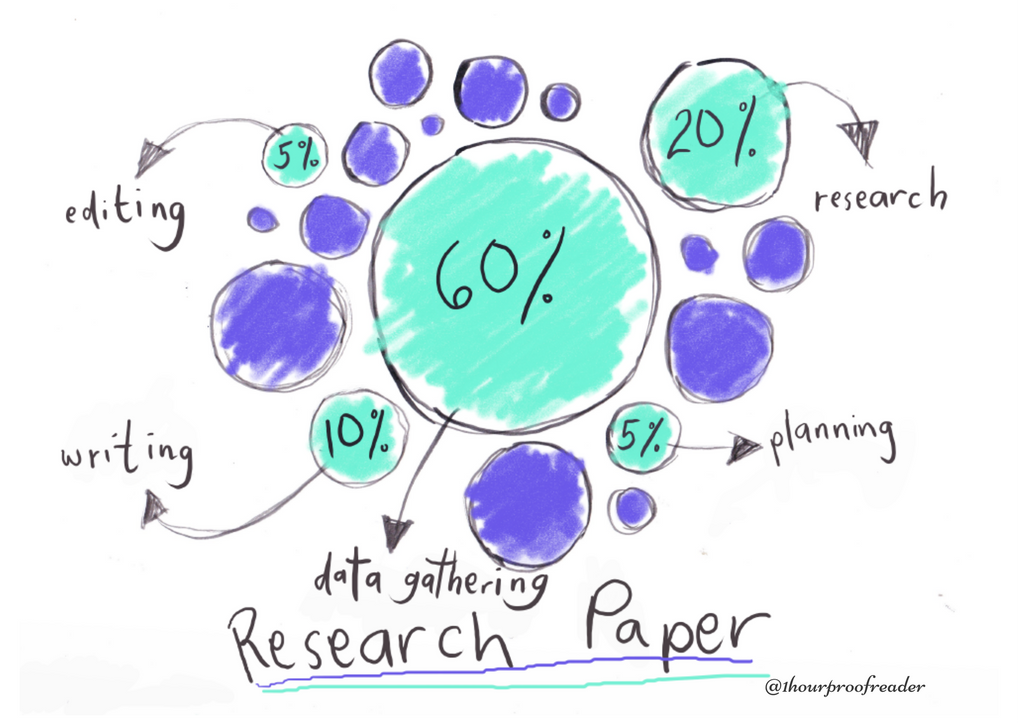
Planning: 5%
Research: 20%
Data gathering: 60%
Writing: 10%
Editing: 5%Time-saver Tip: Take your planning seriously. There is no way to shortcut a research paper. The more you put it off, the longer it will take you to accomplish it.
Much like a research paper, formal essays take more time in planning and research than the whole writing process. The planning and research phase includes several steps: selecting a topic, conducting research, crafting a thesis statement, and deciding on an essay structure. For essays, writing and editing often go hand in hand, since you are unlikely to turn in your first draft.
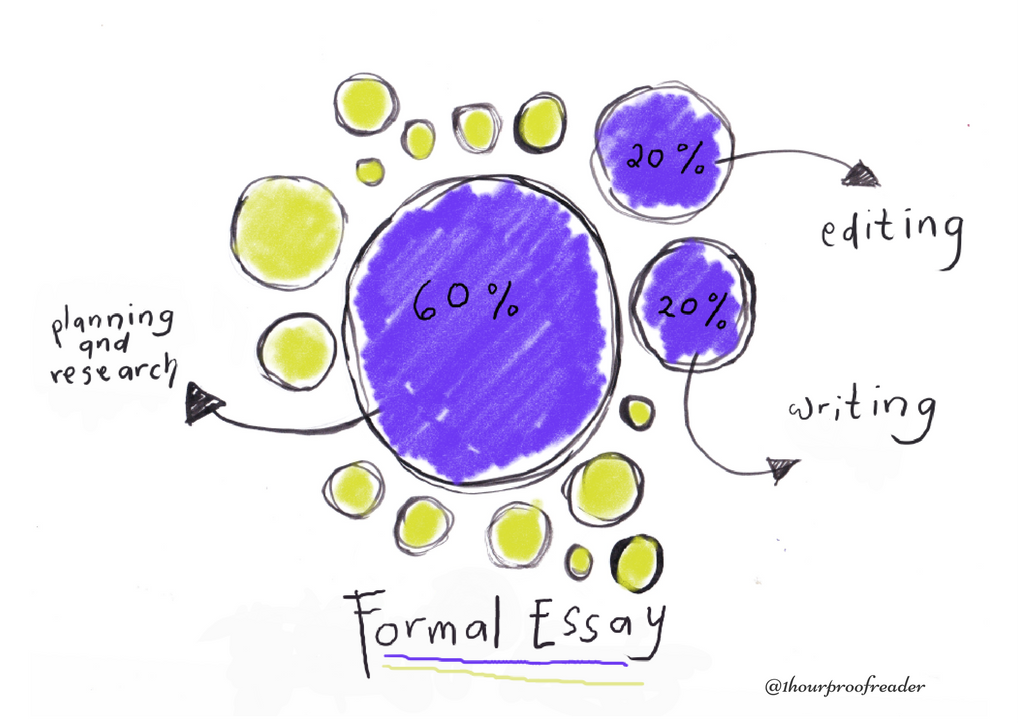
Planning and research: 60%
Writing: 20%
Editing: 20%
Time-saver Tip: When choosing a topic, start first with something general and narrow it down until you find what you want to write about. Be careful when choosing a topic that’s too general (information overload) or too specific (lack of resources).
Depending on the scope of the article, research will likely take up most of your time. For journalistic articles, research often means conducting interviews. Planning includes preparing for interviews, contacting potential interviewees, and discussing the article with an editor. The writing process is also longer than others because in journalism, information is presented differently depending on the type of article you’re writing. As the writer of the article, editing doesn’t take much time as you will have to submit that to an editor.
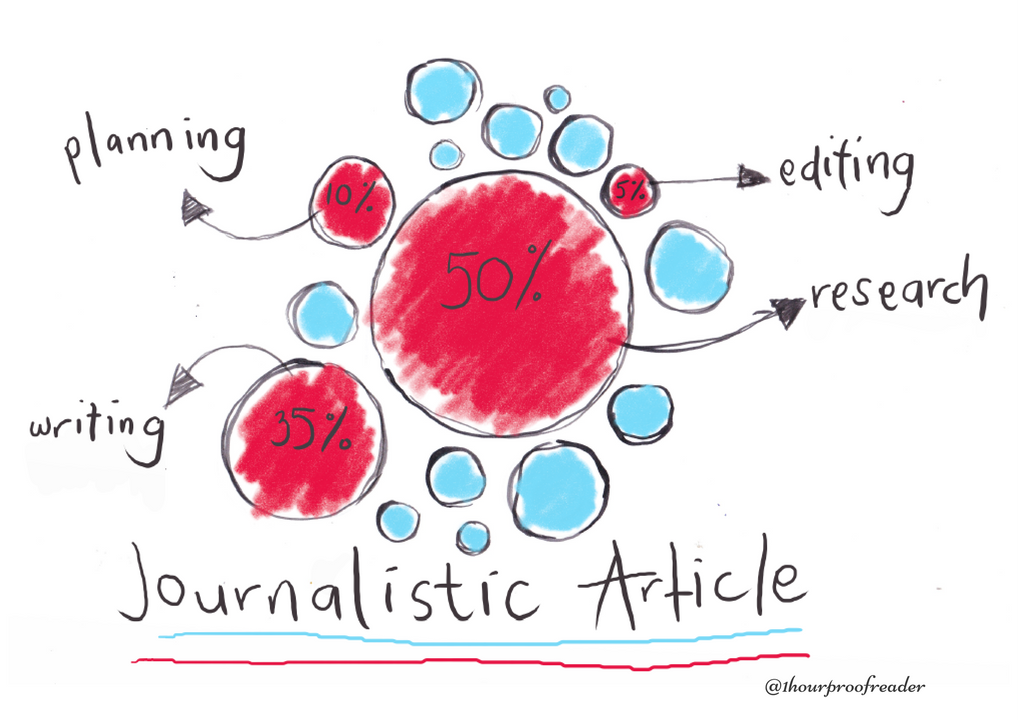
Planning: 10%
Research: 50%
Writing: 35%
Editing: 5%
Time-saver Tip: Write your articles as you transcribe your interviews.
Planning and research often come with interviewing your client. Creativity is needed in advertisement, so no amount of planning can help you channel wit into your copy. It’s up to you to incorporate what your client wants. Editing is minimal, as revisions will often come from your client.
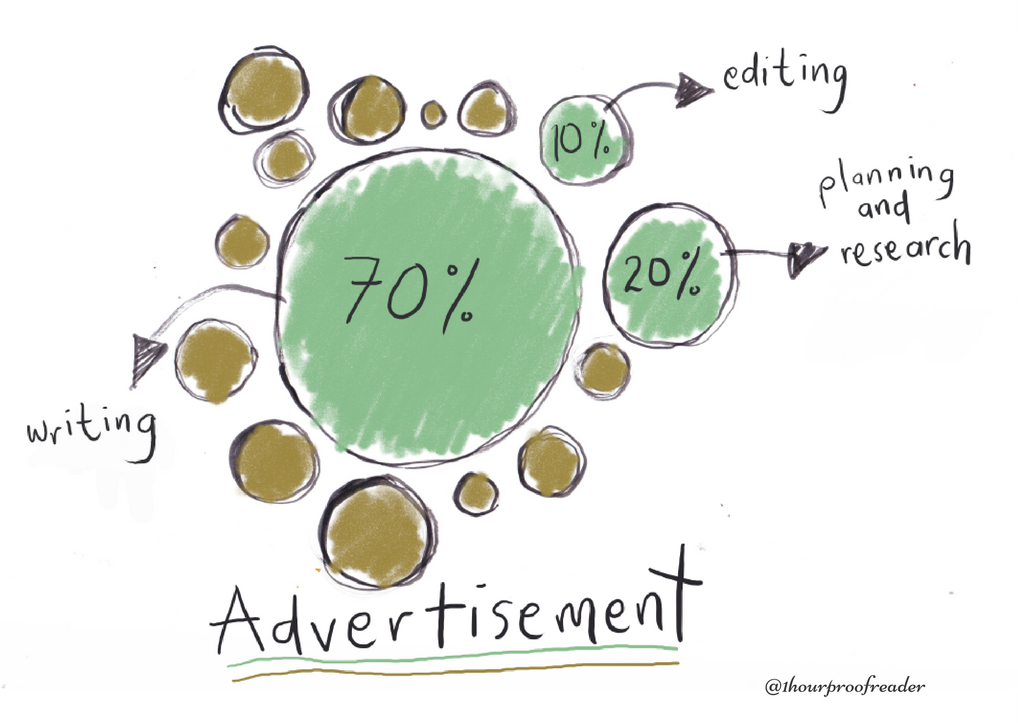
Planning and research: 20%
Writing: 70%
Editing: 10%
Time-saver Tip: If you don’t have an editor, have a third-party editing service look at your article before submitting your copy to your client. Unless you have a separate set of eyes look at your work, you are bound to miss at least one detail.
For letters, planning involves getting the name/s and address/es of your addressee/s and making sure that they’re correct. Writing and editing work hand in hand, as you will have to meticulously look at your letter to make sure it gets the message across in the way you want. Once a letter is sent, there’s no getting it back. Moreover, editing is a more tedious process for letters, as it involves ensuring the right spacing for certain letter formats, as well as making sure that your letter is neither too long nor too short.
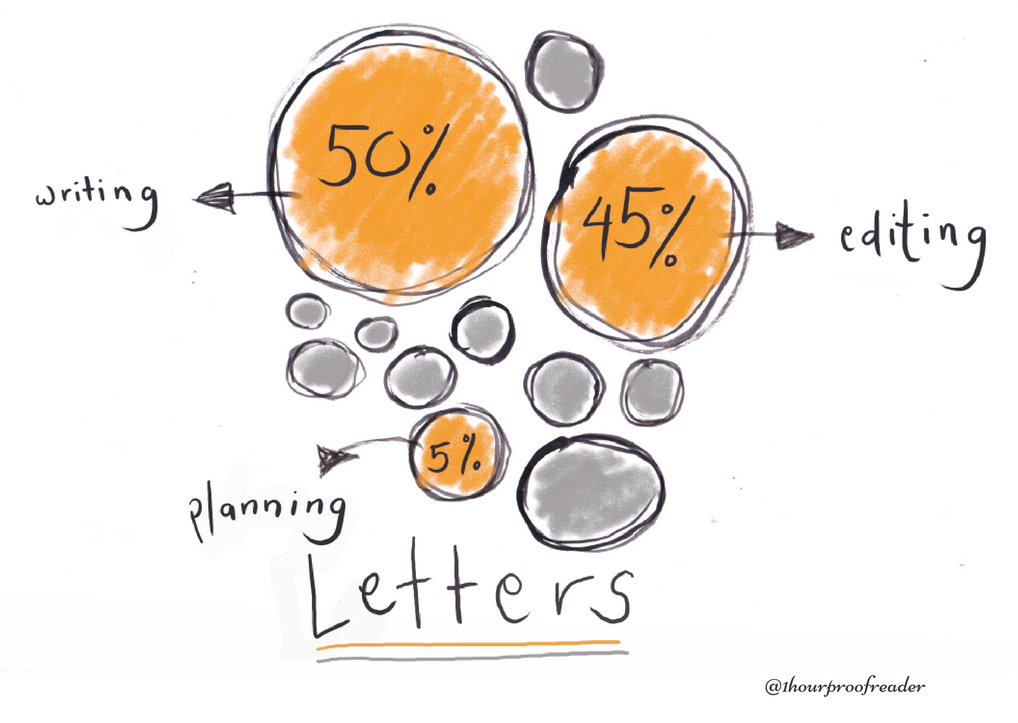
Planning: 5%
Writing: 50%
Editing: 45%
Time-saver Tip: After writing a draft, have someone else read them and ask what they understood from the letter. This will help you assess whether it is ready to go or not.
Short story writing doesn’t need as much planning because there is minimal need for consistency. You might want to create a simple outline, but most of your time will be spent writing. Editing is minimal but more taxing than the planning phase.
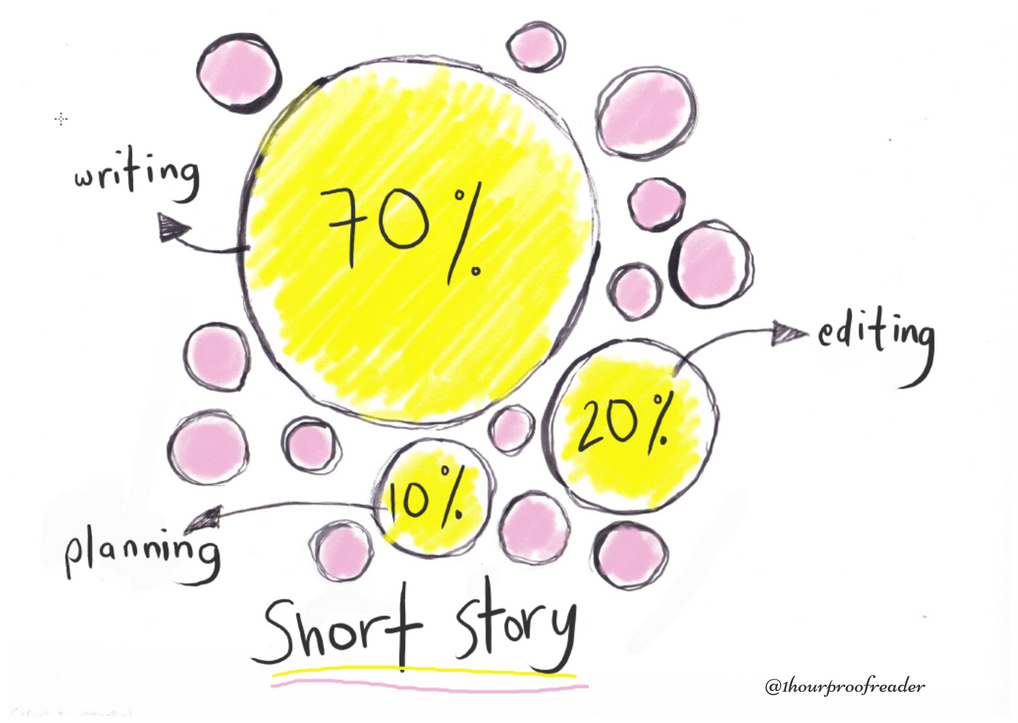
Planning: 10%
Writing: 70%
Editing: 20%
Time-saver Tip: Editing while writing is one way to make sure that you will never finish writing. Turn off your editor switch and write it all down before tightening it up.
Planning is a pretty important step when creating a novel. The planning stage is where you flesh out the elements of your story: characters, settings, motivations, plots, etc. Writing is where you put all of these together to create a cohesive narrative. Writing will definitely take you a long time since a novel, by definition, is no less than 60,000 words.
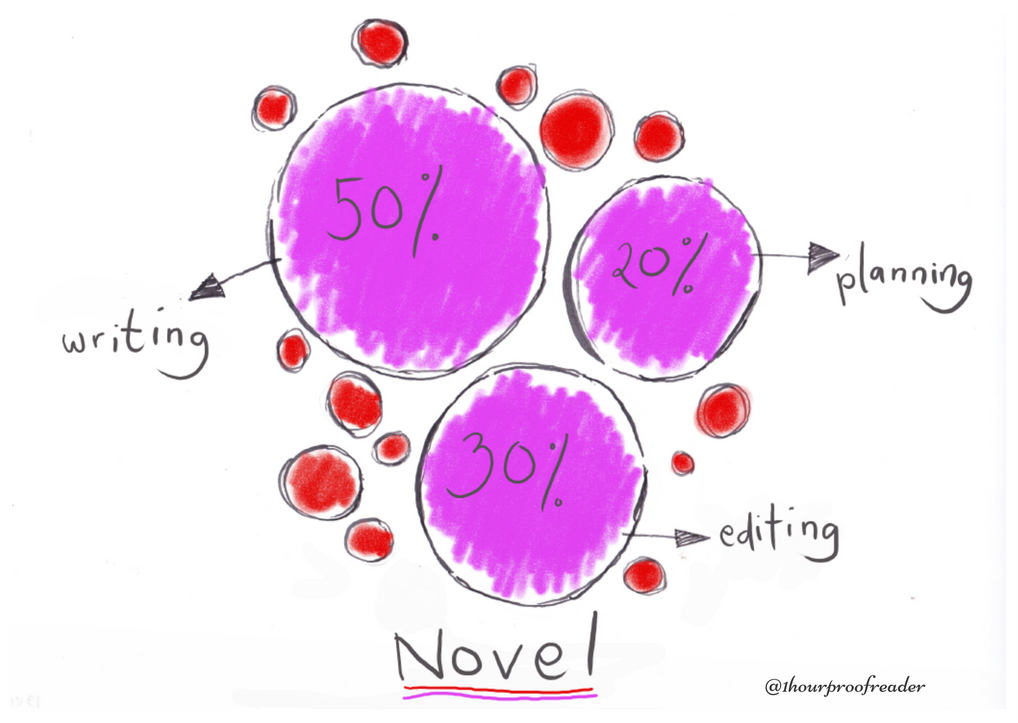
Planning: 20%
Writing: 50%
Editing: 30%
Time-saver Tip: Want to shave off some editing time? Take extra time planning. The more planning you do before writing, the less editing you’ll have to do once you’re finished writing.
So there you go. Not only do you have a visual to help you with your time planning; you also have seven tips to help you save even more time. Pen at the ready? Don’t throw away your shot!
Watch out for more writing hacks from us!
Sources:
Disclaimer: Images are not ours. Credit to the owner.
About 1-Hour Proofreading
1-Hour Proofreading is a growing start-up offering fast and efficient editing services at a reasonable price, with the assurance that the document is publication-ready the soonest you need it. Its team of highly competent professional editors is committed to helping those in need of quality editing services while facing tough deadlines.
Visit 1hourproofreading.com for more details.
Follow us:
Back to Grammary



